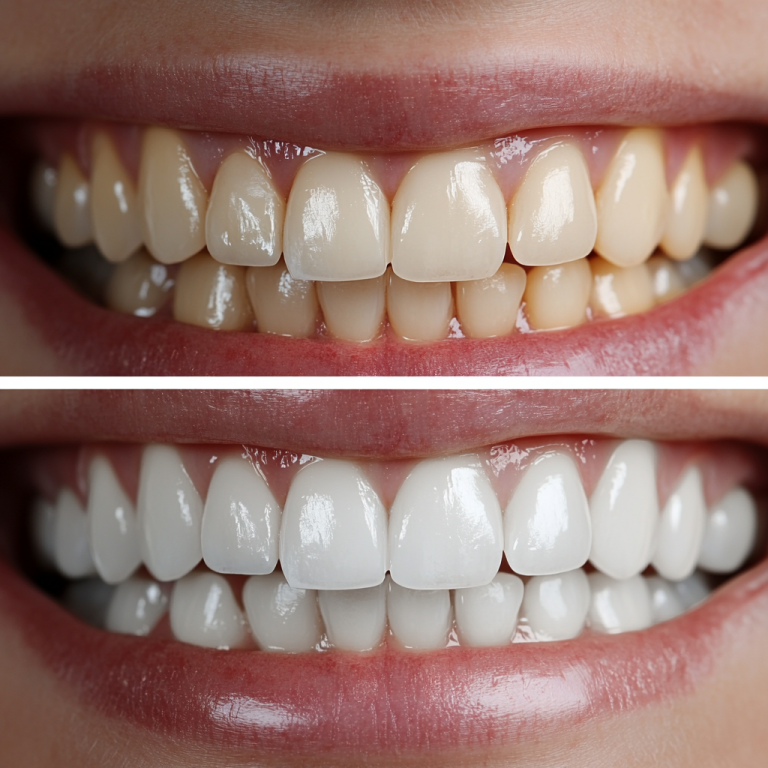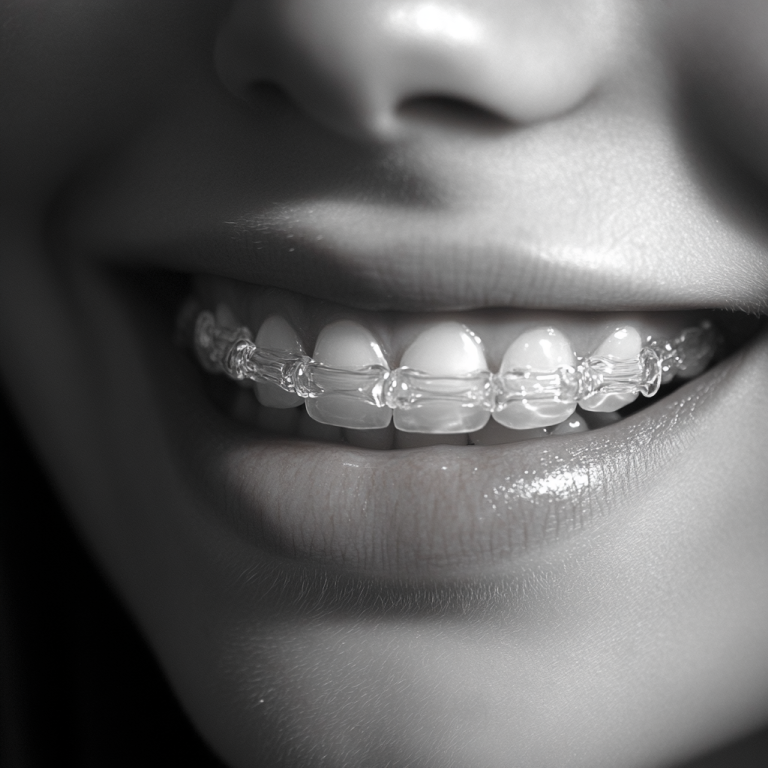Composite Veneers Vs Porcelain Veneers – Which Is Best For You?
Dental veneers come in two major variations: composite veneers and porcelain veneers. Although they both serve the same purpose—to provide the impression of a winning smile—there are a few differences in their characteristics and the advantages they provide. The pros and cons of composite vs. porcelain veneers will be discussed in detail in this article.
Definition of Porcelain Veneers And Composite Veneers
Porcelain veneers are thin, custom-made shells that suit your teeth and serve as a cover or shield. They produce a very lifelike and realistic depiction, much like wearing a false nail, but they are far more lasting.
Because porcelain veneers are transparent, they can imitate the light-reflecting qualities of real enamel. This creates the realistic impression of teeth while also adding strength and resilience, giving the appearance a true sense of depth.
Meanwhile, a composite veneer is made of resin that is tinted to imitate the appearance of teeth. A dentist will apply it to the enamel of your tooth in layers and shape it there. After applying a powerful light to set the resin, it is smoothed to produce a natural-looking finish. If more layers are needed to get the desired aesthetic result, they can be added and moulded.
Additionally, composite veneers can be used to cover teeth that are cracked or discoloured, with the laminated veneer substance serving as a filler for the harmed tooth. Composite veneers are long-lasting and non-destructive. They may also be used to fix minor tooth alignment issues so that your smile seems straighter.
Benefits of Composite Veneers Vs Porcelain Veneers
Cost is a significant advantage of composite veneers, particularly when compared to porcelain. Porcelain veneers often cost about twice as much as composite veneers. Composite veneers’ main benefit, though, is that they can be created as part of a same-day smile makeover. You may have them completed in a single day thanks to composite bonding, which is significantly less painful and speedier than having them created in a clinic.
Composite veneers also have the benefit of requiring little to no preparation of your natural teeth, preventing any long-term damage. This implies that, if necessary, the mixture may be taken out and changed. With porcelain veneers, your natural tooth will probably need to be modified in a way to align with the veneer.
In comparison to composite resin, porcelain veneers are considered to be stronger and more long-lasting. The material has a high level of stain and chip resistance. They can last 10 to 15 years if they are maintained properly. Relatively, composite veneers last 5 to 7 years on average. The translucent quality that porcelain offers, which flawlessly replicates the appearance of tooth enamel in nature, is another significant benefit.
Composite veneers, on the other hand, are simpler to remove, repair, and replace. The porcelain veneer technique also involves a lot more work because the veneers need to be shaped in a lab. This technique is constantly being improved upon and expedited, notably with the use of CAD/CAM (Computer-aided design / Computer-aided manufacturing) technologies, which greatly expedite the procedure.
Composite Veneers And Porcelain Veneers Lifespan
Nowadays, composite veneers are a lot more durable than they were before. They can survive between five and seven years on average, as was previously noted. After that, you’ll most certainly require a new set.
Your composite veneers may last longer if you take proper care of them and maintain good dental hygiene in general. Brushing frequently with non-abrasive toothpaste is one way. Furthermore, you should make an effort to prevent using your front teeth alone to bite down on any hard items or foods.
Unlike composite veneers, porcelain veneers can be maintained properly to increase their lifespan, which can be between 10 and 15 years. For some patients, porcelain veneers can be maintained for more than 20 years. They may be used to correct serious colouration or spacing problems for this reason among others.
Porcelain veneers do not, however, guarantee a lifespan of 10 to 15 years. In the end, how well you maintain and care for them after the treatment will determine how long they last. The appearance of the veneers may also be affected by any underlying natural teeth that begin to deteriorate. As a result, it’s crucial to practise appropriate dental hygiene.
Comparison Of Porcelain Veneers Vs Composite Veneers
Durability
When taken care of properly, porcelain veneers will last around 10 and 15 years, which is nearly twice as long as composite veneers. While the porcelain material is very fragile on its own, when it is attached to the tooth, it becomes very durable. Comparatively speaking, composite is not a weak substance; it is still incredibly robust, but it is not as chip-resistant as porcelain. However, a porcelain veneer would need to be replaced if damage occurs. However, composite veneers can typically be fixed in a single quick and simple procedure.
Cost
Generally speaking, composite veneers are more affordable than porcelain veneers. If porcelain veneers break or need to be replaced for any other reason, they become considerably more expensive. Porcelain veneer placement requires more time, skill, and resources, thus it makes sense that they are more expensive. If you often break your composite veneers or need to have them repaired, the overall cost can be the same. However, composite veneers are less expensive when properly maintained and kept in good dental condition.
Stain Resistance
Porcelain veneers are recognised for their ability to fight against common stains like those left behind by cigarettes, red wine, tea, and coffee. Composite veneers do not claim the same level of stain resistance. Over time, foods with a rich colour or a dark hue might stain composite veneers. Although this is currently becoming reduced due to modern materials and technological breakthroughs.
Procedure Time
Composite veneers win easily when it comes to quickness, effort, and comfort. They take the least amount of time and effort to prepare for of the two dental operations. They may even be used chairside the same day. Your dentist will apply, cure, and polish the material all at once after matching it to the colour and tint of your neighbouring teeth. However, porcelain veneers usually require at least two appointments. This is because before the veneers can be made, your dentist must first make an impression of your teeth and submit the final shape to the in-house lab. You will be provided with a set of temporary veneers to wear in the meantime. The actual porcelain veneers will eventually be cemented to your teeth during a second session.
Preparation
Before placing a porcelain veneer on your tooth, your dentist must first remove a very thin layer of the tooth’s surface. This implies that the tooth structure is irreversibly and permanently changed. Additionally, the process takes much longer and needs multiple trips to the dentist. Conversely, no tooth preparation is necessary with composite veneers because they adhere directly to the tooth surface. The tooth’s structure is not at all harmed or destroyed by them.
Over All Look
Due to their translucent nature, porcelain veneers can catch light in a similar way to a real tooth. Moreover, they are far less likely to chip than a composite veneer and are stain-resistant. Additionally, unlike a composite veneer, which must match the colour of your tooth, they can completely alter the colour of your teeth. Porcelain veneers, however, cannot be fixed if they crack or get stained. Unlike composite veneers, which can be repaired in a single day, they must be changed.
Conclusion
It is difficult to decide between these two types of veneers in the end because each one has its own unique advantages that are present in equal proportion. In the end, it will rely on your own objectives and needs, as well as the discussion you have with your dentist. The only accurate way to determine whether a porcelain veneer or a composite veneer is best for you is to speak with a specialist. Your personal motives, the condition of your present teeth, and your cosmetic goals will all be taken into account by the dentist.
A composite veneer procedure is generally a good fit if affordability and convenience are your main considerations. Porcelain veneers might be a good option for you if money is not an issue, but appearance is more important to you, or if your teeth are more seriously damaged.
In the end, both of these choices provide excellent outcomes with improvements in smiles and confidence. Find out which solution is ideal for you and your unique situation by speaking with your dentist.
Who Are Suitable To Get Veneers?
The majority of people can, in general, have dental veneer therapy. Your teeth’s flaws can be hidden by this dental surgery, giving you a straight, radiant smile. This can include teeth that are squinted, uneven, chipped, deformed, stained, or otherwise discoloured. They differ from other procedures like dental crowns in that they don’t cover the back of the tooth, while crowns may require more tooth preparation.
When teeth are in reasonable condition and individuals only want to change the shape or colour of their teeth, veneers are a good option. When teeth have more significant damage, such as a fully fractured tooth, crowns are typically employed.
Please don’t hesitate to contact the staff at Southside Dental Care to learn more about the possibilities available to you with dental veneers or any other cosmetic orthodontics. In order to find out what we can do for you, you may also schedule a consultation with our skilled dental staff.





